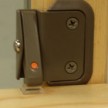

For example, inducing affective mood states has been shown to influence attentional breadth (Fredrickson & Branigan, 2005 Gable-and Harmon-Jones, 2008) where positive mood states that are low in motivational intensity (e.g., satisfaction, serenity) increase global bias, whereas positive mood states that are high in motivational intensity (e.g., desire, engagement) decrease global bias.įor the sake of survival, it is crucial to approach stimuli that are desirable, such as food or potential mates. However, changes in stimulus parameters, such as visual angle (Kinchla & Wolfe, 1979), time of exposure (Paquet & Merikle, 1984), or the aspect ratio (Kimchi, 1992), have also been found to influence an individual’s global/local bias, as have situational or state manipulations. Some individuals show a bias toward focusing on the local level, while others show a bias toward focusing on the global level, and these biases have been found to be relatively stable over at least 10 days in multiple global/local tasks (Dale & Arnell, 2013). There are reliable individual differences in global/local biases when tasks and stimuli are kept constant. For example, individuals with a global bias may be faster to detect a target letter at the global level than at the local level (e.g., Gable & Harmon-Jones, 2008), may show greater interference from the global level when needing to attend to the local level (Dale & Arnell, 2013 Navon, 1977), and may be more likely to report seeing the global level (forest) over the local level (trees) such as when they identify a triangle made of squares as more similar to a triangle made of triangles than to a square made of squares in the hierarchical shape task (e.g., Dale & Arnell, 2013 Fredrickson & Branigan, 2005 Kimchi & Palmer, 1982). An individual’s attentional breadth is measured through their inclination to attend to the local or global level a local bias reflects greater focus on the local level and indicates narrowed attention, whereas a global bias reflects greater focus on the global level and indicates broad attention. 1 can be seen as a large F (global) or as several smaller Ts (local). For example, the hierarchical Navon letter (Navon, 1977) shown in Fig. Visual stimuli can often be perceived in their entirety or as smaller elements. However, breadth of attention and changes in attentional breadth were unrelated to frontal asymmetry, suggesting that the influence of self-control on individuals’ attentional breadth was not due to changes in frontal activation patterns. Greater BAS, and greater difficulty exercising self-control, both positively related to more narrowed attentional breadth after completing the manipulation relative to before, but only after exercising self-control. This was the first study to examine both frontal asymmetry and attentional breadth before and after exercising self-control in low and high BAS individuals. The process model of self-control posits that exercising self-control leads to a subsequent increase in approach behavior in high BAS individuals, and this could be due to a shift towards left-hemisphere-frontal processing. Approach motivation and attentional breadth have previously been associated with frontal alpha asymmetry (i.e., lateralized cortical activity in the frontal regions) where greater left-frontal activation is associated with greater approach motivation and reduced attentional breadth. Exerting such self-control has been shown to influence attentional breadth differently depending on approach-motivated tendencies, as indexed by individuals’ behavioral activation system (BAS) scores.

People often inhibit or override their dominant response tendencies in order to complete tasks successfully.


 0 kommentar(er)
0 kommentar(er)
